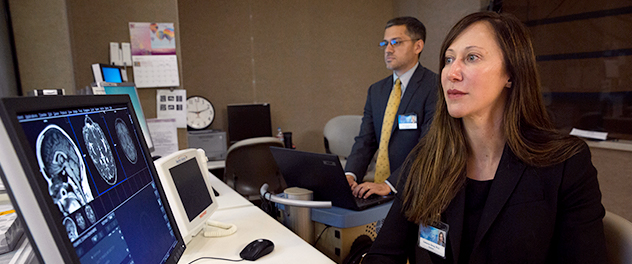 Mapping atypical pain processing
Mapping atypical pain processing
Using brain-imaging techniques to analyze and identify imaging biomarkers for concussion, migraine and other headache disorders, Dr. Schwedt and his team study how alterations in brain structure or function are related to pain processing.
Overview

Age-related cortical thinning is shown in patients with migraine.
The Neuroimaging of Headache Disorders Laboratory of Todd J. Schwedt, M.D. and Cat Chong, Ph.D., at Mayo Clinic's campus in Phoenix, Arizona, uses magnetic resonance imaging (MRI) and other types of imaging to study migraine, post-traumatic headache and other headaches. Correlating patient symptoms with brain imaging helps the team better understand the underlying causes of migraine and headache disorders.
More specifically, the aim is to pinpoint the areas of the brain associated with pain and other symptoms, and to investigate the neuroimaging commonalities and differences among headache disorders. The laboratory uses computational modeling techniques that enable the classification of specific headache disorders and prediction of patient outcomes based on structural and functional brain MRI data.
Major funding
The Neuroimaging of Headache Disorders Laboratory has received continuous funding for many years, including grants and contracts from the National Institutes of Health, United States Department of Defense, the Patient-Centered Outcomes Research Institute, medical foundations and industry partners.
Education
The Neuroimaging of Headache Disorders Laboratory provides teaching opportunities to undergraduate, graduate and medical students, and postdoctoral fellows interested in neuroimaging protocols, techniques and methods of data analysis.
Contact the laboratory to learn more.